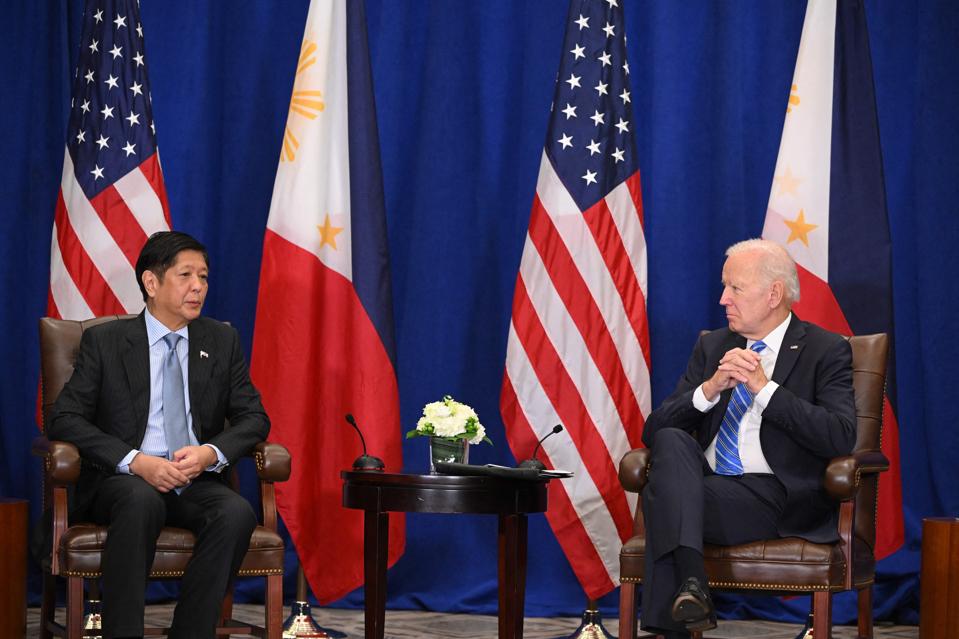USA retail is slowing down and the Philippines could surely help.
Scanning multiple USA retail issues, the complaints often seem to lean in one direction. Whether it is the high cost of financing inventory or consumer malaise, retailers are pointing fingers at the Biden Administration – because international trade initiatives for product procurement have been somewhat nonexistent, plus there is a general lack of retail enthusiasm in both the White House and on Capitol Hill. One particular problem appears when retailers ask the government a question: “If you want us to get out of China – where should we go? – and why are the exit doors being blocked?”
These days (in retail), one is hard pressed to name a senior executive who has maintained his/her position in the C-suite for a prolonged period of time. Plus, there is the endless stream of retail bankruptcies, store closings, and missed sales targets – which make the industry seem like a dormant volcano spewing embers.
On one hand, the federal government encourages an exit from China – on the other hand the federal bureaucracy doesn’t offer workable alternatives or pending opportunities. In addition, those who source finished product, components, or even raw materials from China are now tangled in the web of the Uyghur Forced Labor Prevention Act (UFLPA) – as U.S. Customs continues to question cargo at the border – which they can hold for months without explanation – causing retailers (in some cases) to miss selling seasons while they also incur serious legal and logistical costs.
In order to grow, retail needs to develop new places to acquire product, but Congress, The U.S. Trade Representative, and the Biden Administration seem to be thwarting that goal. In addition, unforeseen world events continue to hamper retail supply lines and add to raising costs/inflation. As an example, many container ships now avoid the Suez Canal because of Houthi aggression; they also avoid the Panama Canal because it is low on water and, of course – they avoid the Port of Baltimore due to the recent bridge collision. Suppliers manufacturing in Myanmar have to deal with a military government, those in Ethiopia have lost their African Growth & Opportunity (AGOA) benefits, and those in Haiti are under siege from gangs that have taken over much of Port-au-Prince.
Looking to catch a break, retailers and brands often turned to the Philippines for product – because they maintain quality factories and also have a highly skilled labor force. Unfortunately for the Philippines, several years ago, when China ascended to the WTO and quota disappeared, the country lost more than 500,000 manufacturing jobs – as the business migrated to China.
Retail remembers that former President Trump was open to a Philippine Free Trade Agreement, but that idea collapsed with (then) President Duarte’s war on drugs and the extrajudicial killings that seemingly ran amuck. Now, with a more USA friendly President Marcos in power, it is surprising that team Biden has yet to achieve some sort of new trading solution – that would allow for goods to effectively move back from China to Philippine production.
Looking at historical facts, one can only wonder why the veil of protective trading with the Philippines hasn’t been lifted. The United States gained control of the Philippines in 1898 – long before the Japanese invaded the country in 1941. The Japanese forces were ousted by U.S. General Douglas MacArthur in 1945, and total independence for the Philippines was achieved in 1946. Since that time – there have been only two formal trading arrangements with America, and the last one ended 50 years ago.
The U.S. Congress passed the Bell Trade Act in 1946 which was not very popular because it gave “parity” to both U.S. Citizens and Filipinos for certain transactions. The Bell Trade Act was superseded by the Laurel-Langley Act which ran from 1955 to 1974. Truth be told, many, many years have now passed with no significant agreement to foster commercial ties and trade with America
When WWII broke out in the Pacific, the Philippines provided more than 250,000 troops towards America’s war effort against Japan. But, when it came to post-war trade with the USA, President Obama, offered the Trans-Pacific- Partnership (TPP) to Japan, and not to the Philippines.
When the Korean War broke out, the Philippines provided 7,400 troops towards America’s war effort. But, when it came to trade with the USA, President George W. Bush (and then President Obama), gave Korea a full-fledged Free Trade Agreement named KORUS and there was nothing for the Philippines.
When the Vietnam broke out, the Philippines provided more than 10,400 personnel for medical and civilian activities towards helping America’s war effort against North Vietnam. But, when it came to trade with the USA, President Obama offered the Trans-Pacific- Partnership (TPP) to Vietnam, and not to the Philippines.
As President Marcos visits the White House this week, retailers hope there is continuing dialogue for some sort of preferential trade preference. The Philippines was once a significant source of USA bound commercial activity – especially for the fashion and accessories industries. If there were to be a trade program between the USA and the Philippines, the many jobs that were ceded to China could easily return to the Philippines.
There is an Aesop’s fable about two friends and a bear that helps explain this subject pretty well.
Many years ago, two friends were walking in the forest when they were approached by a scary bear. Frightened, one friend lay quietly on the ground and did not move – while the other quickly climbed a tree to escape. The scary bear sniffed the ear of the friend on the ground and eventually moved away. The friend from the tree climbed down and asked what the scary bear had said.
The friend on the ground looked him straight in the eye:
The bear told me that a true friend will never abandon you, no matter what the circumstances.

